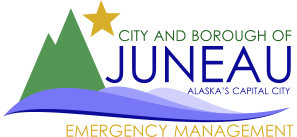Avalanche Advisory Archive Pre-2016
| Date Issued: | 2012-04-23 |
|---|---|
| Danger: | 1 |
| Trend: | 3 |
| Probability: | 2 |
| Size: | 1 |
| Problem: | 0 |
| Discussion: | TODAY...MOSTLY CLOUDY. PATCHY FOG IN THE MORNING. ISOLATED RAIN SHOWERS. HIGHS AROUND 49. LIGHT WINDS BECOMING SOUTHWEST 10 MPH IN THE AFTERNOON. TONIGHT...MOSTLY CLOUDY. ISOLATED RAIN SHOWERS. LOWS AROUND 35. LIGHT WINDS BECOMING EAST 10 MPH LATE. TUESDAY...DECREASING CLOUDS. HIGHS AROUND 53. NORTHEAST WIND Temperatures cooled well again overnight and conditions remain somewhat cloudy... We are loosing the mass quickly above our urban zones. The danger levels may still be there for seeing small avalanches but we have lost enough mass that nothing is expected to be too big. If we see significant precip the dangers could rise a little... but for the most part we are running out of concern for the urban enviroments. Be aware in the backcountry avalanches are still possible for a bit longer. Be cautious on steep slopes showing glide cracks and avoid spending time around or under them. |
| Tip: | Safe Travel Techniques on Glaciers Mountain Experience is Needed for Secure Glacier Skiing and Hiking Route Finding on Glaciers, a Mountaineering Skill - Lisa Auer High mountain skiing requires mountaineering techniques as well as off-piste skiing skills. Glacier hazards include crevasses, slipping on ice and serac falls. Crevasse rescue is an emergency technique used to extract someone from a mountain crevice. A crevasse fall can be a serious even fatal mountain accident. Preventative action is therefore the key to safety in big mountains. Route finding, appropriate rope use and crevasse rescue techniques are some of the skills required to maximise safety while travelling on a glacier. Since glaciers are moving, they present an ever-changing mountain landscape ? often spectacular but also hazardous to skiers climbers and hikers travelling on glaciated terrain. The dangers may be hidden from view under snow or, during poor visibility. Crevasses, ice and seracs (unstable towers of ice) cannot be located precisely on a topographic map. Planning a Glacier Trip Safe glacier travel begins in the planning stages, before the party has stepped out the door. Take into account the group's glacier experience, ability and equipment, the weather forecast, current snow conditions, familiarity with the area and consider using the services of a UIAGM / IFMGA certified mountain guide before venturing on a glacier trip. Don?t plan a glacier trip in a poor forecast, even inversion cloud on a fine weather day during a high pressure system can create poor visibility or flat light. Glaciers typically have few safe features or landmarks to navigate by. Use a Rope For Glacier Travel Un-roped glacier travel may be considered when: Travel Techniques on a Glacier What to Carry for Safe Glacier Travel Always proceed cautiously with glacier ventures to minimize exposure to mountain hazards. Do not hesitate to rope up if the terrain and crevasse patterns are unknown. Ensure the party has the skills and equipment for extracting themselves from a situation if things go wrong. Unlike skiing on piste where each skier can go where they like thanks to groomed, patrolled trails; security off-piste especially on glaciated terrain depends largely on the collective behaviour of the group: organisation, discipline and the choice of route. References for this article include: F. Burnier and D. Potard Mont Blanc Off-Piste, Vamos, France 2008. |
